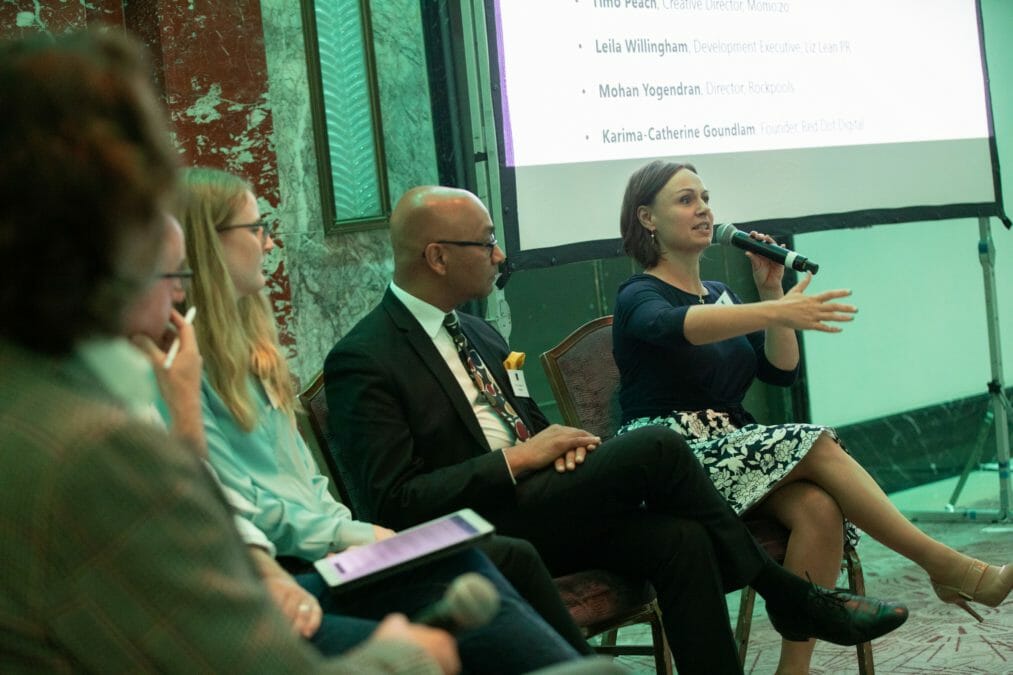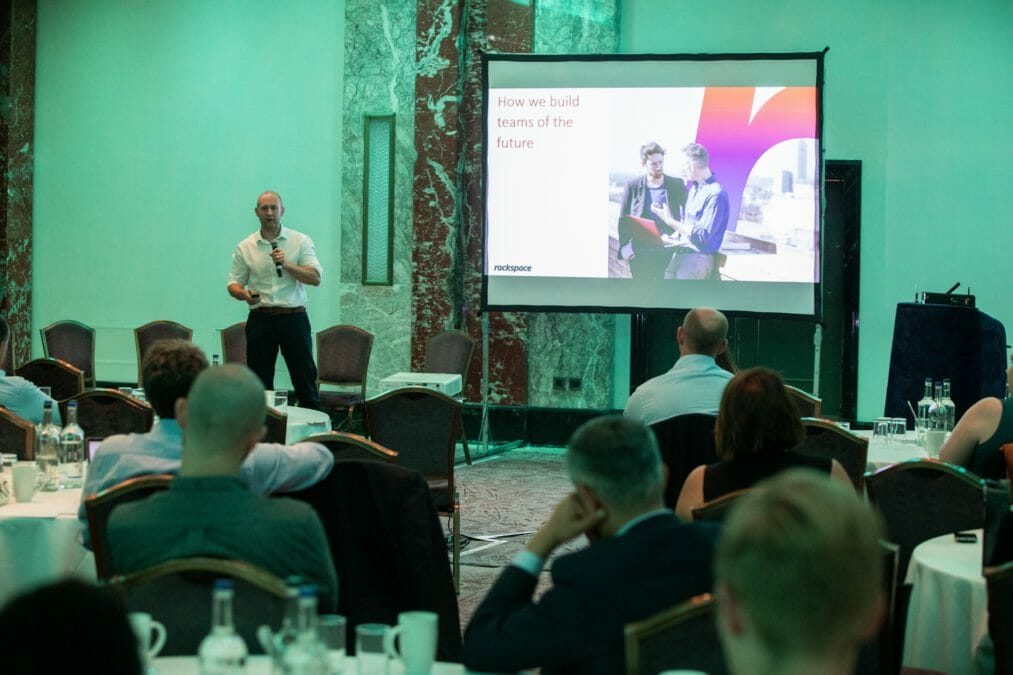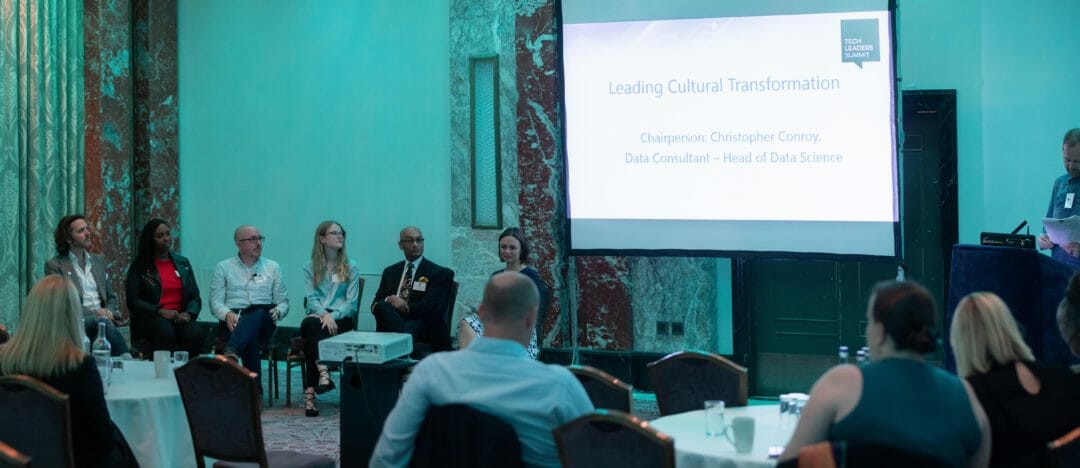It was clear from the engaging debates that advancements in AI and disruptive technologies are racing ahead. But what was also apparent is that diversity and inclusion remain one of the biggest challenges facing the tech sector — the main theme of the cultural transformation stream at Tech Leaders Summit.
Tech Leaders Summit provided an opportunity to address the need to improve age, gender, ethnic and disability representation in the technology workforce to represent better the diverse population tech businesses serve. If they don’t, they face missing out on the valuable talent needed to meet their fiscal responsibilities and desires.
During the Leading Cultural Transformation stream, speakers shared a variety of different experiences of being female, of an ethnic minority, older or younger or having a disability in the tech industry. There was also a lively debate on how to stamp-out ‘bro cultures’ and avoid groupthink.
Delegates left armed knowing how to leverage diversity for greater innovation, build diverse teams of the future and deliver impactful organisational cultural change.
The future of innovation is collaboration — Tech Leaders Summit keynote 2019
Leveraging diversity for greater innovation
“How do you get people from different backgrounds to work together effectively?”, asked moderator Matt Ballantine, CIO and CTO Advisor, Stamp London, of a panel comprising Dr Nancy Doyle, CEO Genius Within UK; Timo Peach, Creative Director, Momo:zo; Leila Willingham, Development Executive, Liz Lean PR; Karima-Catherine Goundiam, Founder, Red Dot Digital and Mohan Yogendran, Director, Rockpools.
“Teams need to be flexible and not make assumptions that when people behave in a certain way, they have the same intentions as you; particularly around autism,” said Dr Doyle. “People with autism often have heightened senses, so in this instance it’s about understanding the biological causes for unexpected behaviours.
“It is also about accepting that we may not always understand people who are different from ourselves and take the time to ask questions.”
Peach said: “We all need to wake up to the fact that we experience things differently. We should approach diversity in the same way we do art and force people to look at it from a different perspective.”

When it comes to age, Generation Z has grown up in an ever-increasing inclusive society and are more likely to call out inequality to let innovation happen, argued Willingham. “Gen Z is often dismissed as being impressionable, but that often means their horizons are huge. What comes with that is imagination, blue-sky thinking and innovation.
“The most experienced person in the room is not necessarily the most innovative.”
Goundiam said: “Have empathy and reconnect with your human side. Also, be aware of your blind spots and be ok knowing what you don’t know.”
Yogendran said: “We have to avoid getting rid of one stereotype and replacing it with another. We have to learn to respect cultural norms, the importance of people’s faith, and in countries where there is no legislation around the protected characteristics, avoid using preconceived ideas to thwart inclusion.”
The session’s take-home messages were:
• Avoid premature evaluation. Don’t assume you know others’ motives.
• Understand the people you work with, show empathy and foster it in others.
• Talk about shared commonalities and the outcomes the team is trying to achieve — the vision.
• Build trust in teams quickly.
• When hiring, look out the window and not in the mirror.
• Gen Z wants a human relationship with their leaders.
• Role model good behaviour, and
• Leaders are not superhumans.
Technology is the engine of change, says Tech Leaders Summit CTO panel
How to build your teams of the future
The needs, wants and desires of the next generation of employees are changing in line with how services will be identified, procured and consumed. Lee James, CTO — EMEA, Rackspace, shared how his 10-year-old twins influenced how the business builds teams for the future to drive maximum collaboration and engagement.
Rackspace’s Gen Z workforce is growing exponentially, and who just like James’ twins, like doing lots of different things, including playing video games, like Fortnite.
Fortnite is a game of survival, and to do so players must display certain characteristics. It has shown how gamification fun and short-term rewards can be used to engage teams and get them working together.
Rackspace is now using the principles of Fortnite to ensure individuals bring their authentic selves to work, driven by a passion to perform. James said: “We use a ‘net promoter score’ to judge our performance and customer satisfaction. In our biggest account, our score is 62%; achieved through continual learning, taking our culture seriously and working hard to make this a place where people choose to work.”

How to create and sustain a high-performing culture from scale to growth
Andrea Petrone, Strategic Advisor and Leadership Expert, AP Executive Coaching, spoke about how to avoid the mistakes tech start-ups make as they grow and strive to establish an international footprint.
These include:
• Thinking about culture as “something for later”
• Believing that “chaos” is better than structure, and
• Founders and leaders struggling to deal with the people side of the business and communicating with impact.
Petrone gave a thought-provoking analysis a typical business lifecycle and shared how to get leaders to first change their attitudes and behaviours before influencing the culture of the organisation. There are nine key mistakes organisations often make while scaling to growth, but these can be avoided with the right process in place.
“Change in a culture is not a bottom down or HR initiative. It needs to start from leaders to work.”
Supporting agile enterprises at Tech Leaders Summit 2019
Fostering and nurturing team coding skills
What do women want in the workplace? “Mentoring programmes with senior women,” said Ewa Magiera, Head of Communities, Code First: Girls.
“Mentoring is so important for improving retention, attracting new talent, providing guidance and support; and for helping women and young girls combat impostor syndrome. It also sends a ‘yes, you can do this’ message.”
Code First: Girls has been running mentoring schemes with Fintech communities to demystify roles in the sector, expose female graduates to different careers and enable them to network with senior female leaders.
“The benefits to the organisations have been huge,” shared Magiera. “And the feedback has been positive, with mentees stating they had grown in confidence to pursue ambitions and learn from people in which they had several things in common.”
How a great culture gives a business a competitive edge
Rounding off the day was Jacqui Mann, Founder, J Mann Associates, who reinforced what was a common message throughout the day, the importance of an organisation’s culture. Mann also shared top tips on how to get it right to foster diversity and inclusion.
She said: “Your culture is your DNA. It’s about how you do things, and recruit, manage and reward your people. It is what makes you unique.
“A great culture is one everyone understands, values, and that is aligned to the business’s objectives. It needs to have core values at its foundation and be supported by good behaviours.
“While it might take time to develop, a strong culture is critical to business success.”
Related articles
Cultural transformation: why change begins at home
Engaging the millennials and managing your staff turnover rate
R. Michael Anderson reveals the key to (tech) leadership
Tech Leaders Summit: Helping CTOs and tech leaders drive innovation







